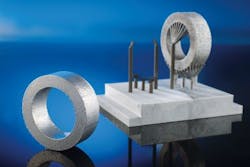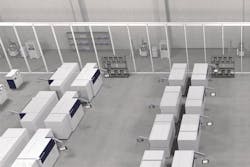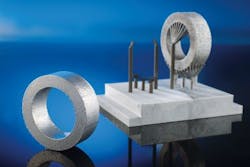Project works towards additive manufacturing for the automotive industry
In a joint project coordinated by Daimler (Stuttgart, Germany) and within the framework of the Federal Ministry of Education and Research (BMBF; Bonn, Germany)'s Photonic Process Chains funding initiative, five companies and two research institutes partnered to examine integration of additive manufacturing processes in automobile series production. Dubbed AutoAdd, the project focuses on laser powder-bed fusion (LPBF), which was developed at the Fraunhofer Institute for Laser Technology (Fraunhofer ILT; Aachen, Germany).
The research projects are to integrate photon-based manufacturing processes such as metal 3D printing into product planning processes. The project aims to develop flexible, hybrid manufacturing conceptual designs, which the industry can use to produce individualized and complex products more efficiently than before.
Of the 14 joint projects within the funding initiative, the AutoAdd project aims to make it easier for the automotive industry to use additive manufacturing within three years. The project partners focused on integrating the LPBF process chain in the automotive mass production environment to create a hybrid process chain and, thus, to reduce unit costs. The BMW Group (Munich, Germany) and Daimler defined the requirements for the additive process chain, which industrial laser machine maker Trumpf (Ditzingen, Germany) and Fraunhofer ILT used to develop various LPBF plant and finishing conceptual designs. The result was potentially production-ready optical designs as well as a modular system architecture that, for example, enables the use of multiple beam sources and a so-called interchangeable cylinder principle. In addition, the project team developed promising automatable post-processing concepts, including removal of support structures, and analyzed novel scalable materials produced by GKN (Radevormwald, Germany).
Additive manufacturing factory design of the future. (Copyright: TRUMPF, Ditzingen, Germany)
Finally, the Karlsruhe Institute of Technology (KIT; Karlsruhe, Germany) evaluated the new factory designs: Using a simulation model, engineers at the Institute for Production Science (WBK; also in Karlsruhe) visualized an exemplary, conventional process chain in which they were able to design various possible LPBF plant concepts. With methods such as cost or benchmark analyses, they were able to compare the new approaches from a technical and economic point of view with previous ones.
Since modular cylinders and the use of wet-chemical immersion baths can now be used to remove components (batchwise) in the post-processing step, the entire process chain can be automated, thereby saving nonproductive time and increasing overall profitability. The AutoAdd project team has also developed common metrics for evaluating LPBF manufacturing equipment and identified them for the most popular equipment manufacturers as part of a large-scale benchmarking exercise. By using standardized benchmark jobs with different test specimens, industrial users can now calculate transferable key figures with which they will be able to find the most economical system for their purposes. In addition, one of the most important points needed to make additive manufacturing technology ready for series production—the reproducibility of the mechanical properties—was demonstrated and evaluated in several state-of-the-art facilities. Integrating an economic additive process chain in automotive mass production can now be considered possible after the end of the project.
Test piece, with supports removed with a wet-chemical process. (Copyright: Fraunhofer ILT, Aachen, Germany)
In 2019, there will be another project, partly based on the present results, dealing with the line-integration of additive manufacturing processes to implement the designed additive process chain.
For more information, please visit www.ilt.fraunhofer.de.


